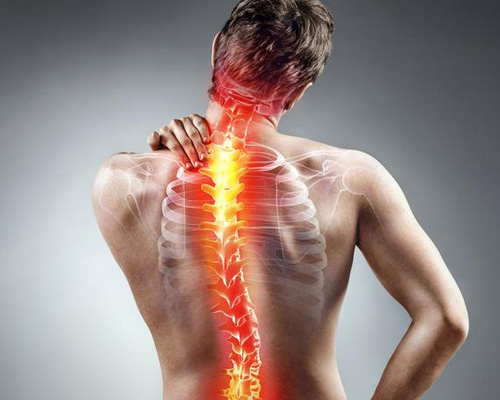Causes
There are several potential sources and causes of back pain. However, the diagnosis of specific tissues of the spine as the cause of pain presents problems. This is because symptoms arising from different spinal tissues can feel very similar and is difficult to differentiate without the use of invasive diagnostic intervention procedures, such as local anesthetic blocks.
One potential source of back pain is skeletal muscle of the back. Potential causes of pain in muscle tissue include muscle strains (pulled muscles), muscle spasm, and muscle imbalances. However, imaging studies do not support the notion of muscle tissue damage in many back pain cases, and the neurophysiology of muscle spasm and muscle imbalances is not well understood.
Another potential source of lower back pain is the synovial joints of the spine (e.g. zygapophysial joints/facet joints. These have been identified as the primary source of the pain in approximately one third of people with chronic low back pain, and in most people with neck pain following whiplash. However, the cause of zygapophysial joint pain is not fully understood. Capsule tissue damage has been proposed in people with neck pain following whiplash. In people with spinal pain stemming from zygapophysial joints, one theory is that intra-articular tissue such as invaginations of their synovial membranes and fibro-adipose meniscoids (that usually act as a cushion to help the bones move over each other smoothly) may become displaced, pinched or trapped, and consequently give rise to nociception (pain).
There are several common other potential sources and causes of back pain: these include spinal disc herniation and degenerative disc disease or isthmic spondylolisthesis, osteoarthritis (degenerative joint disease) and lumbar spinal stenosis, trauma, cancer, infection, fractures, and inflammatory disease. The anterior ligaments of the intervertebral disc are extremely sensitive, and even the slightest injury can cause significant pain.
Radicular pain (sciatica) is distinguished from 'non-specific' back pain, and may be diagnosed without invasive diagnostic tests.
New attention has been focused on non-discogenic back pain, where patients have normal or near-normal MRI and CT scans. One of the newer investigations looks into the role of the dorsal ramus in patients that have no radiographic abnormalities. See Posterior Rami Syndrome.


